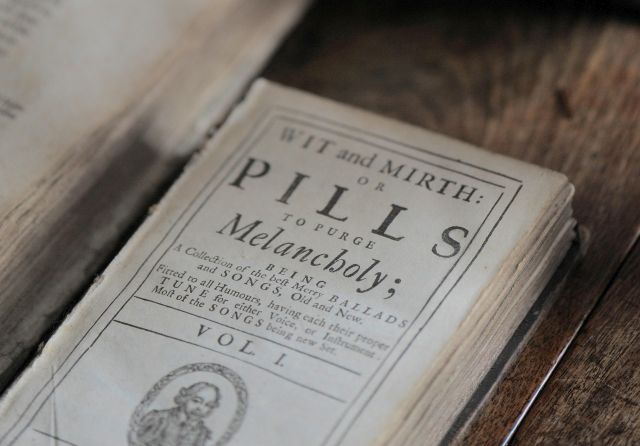Laurence Sterne (1713-1768): writer, humourist, sentimentalist & clergyman
Laurence Sterne was born in Clonmel, Ireland in 1713, son of an army ensign. During his first ten years the family moved from barracks to barracks. At the age of ten, Laurence went to school in Halifax and later went on to study divinity and classics at Jesus College, Cambridge. He was ordained into the Church of England as a deacon in 1737 after graduating that year. With the help of his uncle, Dr Jaques Sterne (Precentor of York), he began to make a moderately successful ecclesiastical career. He was ordained priest in 1738 and was granted the living of Sutton-on-the-Forest, to which he added six years later the living of Stillington. He married Elizabeth Lumley in 1741 and had a daughter, Lydia – the only one of his children to survive infancy.
Two of his sermons were published in 1747 and 1750, but the publication of a satirical pamphlet in 1759 displayed his talents as a writer.
The pamphlet, A Political Romance, was suppressed; but it gave Sterne the inspiration for a more ambitious work, and he contacted the London bookseller, Robert Dodsley with the draft of one volume of a work entitled The Life and Opinions of Tristram Shandy. Unable to secure a guarantee of publication, Sterne revised the work and in 1759 printed and published the first two volumes of Tristram Shandy by paying for it himself and sending it to London.
Tristram Shandy was an immediate success. Sterne became famous virtually overnight and following the exhibition of his portrait painted by Joshua Reynolds became a celebrity within the first few months of the book’s release.
Sterne had already published the first two volumes of The Life and Opinions of Tristram Shandy, Gentleman when he came to Coxwold in 1760. He wrote the next seven volumes of Tristram Shandy and A Sentimental Journey through France and Italy while living at Shandy Hall.
His friends celebrated his success as a writer by christening his new home ‘Shandy Hall’, the word Shandy being a dialect word for ‘wild, nonsensical, merry or odd’.
Alterations to the house were made by Sterne including the building of a coach house, a cellar and a box-like two-storey brick façade at the west end.
He had been afflicted all his life with illness, and travelled for his health to France, where his wife and daughter took up residence. In the last years of his life he fell in love with Eliza Draper, and wrote A Journal to Eliza after she returned to India and her husband.
Laurence Sterne died in 1768, and was buried three times: once in the graveyard of St. George’s, Hanover Square; again when he was recognized after having been disinterred for anatomists; and finally, when development took place at the London burial ground, his skull and a femur were taken to Coxwold and buried outside the church where he was once the preacher.







